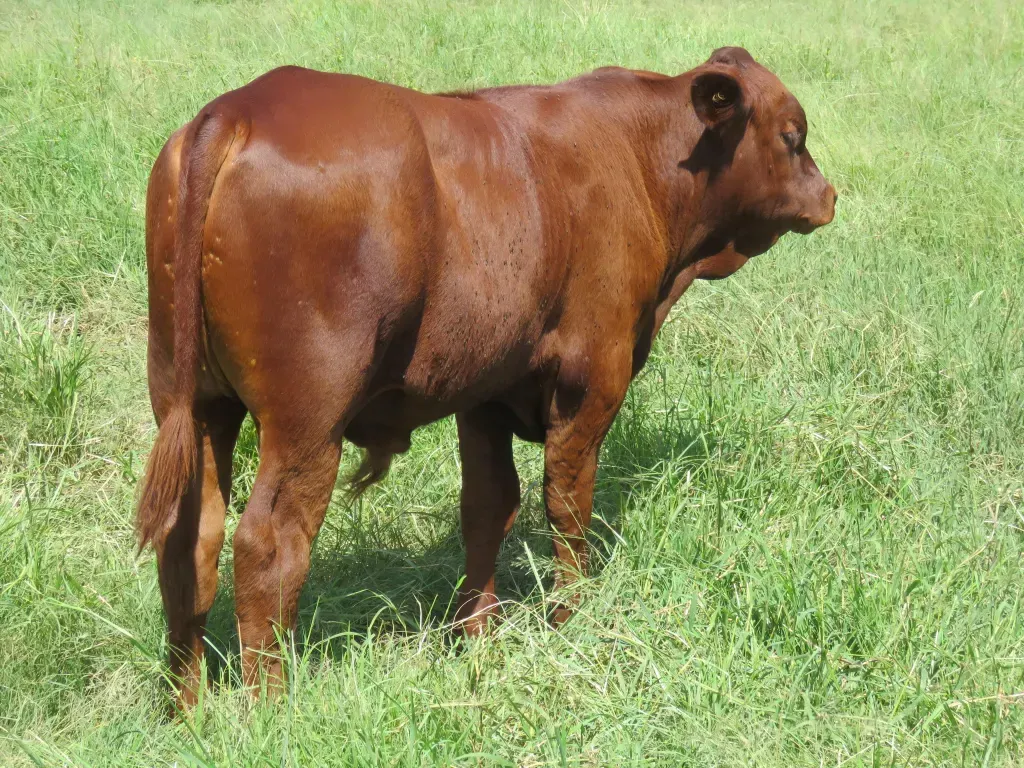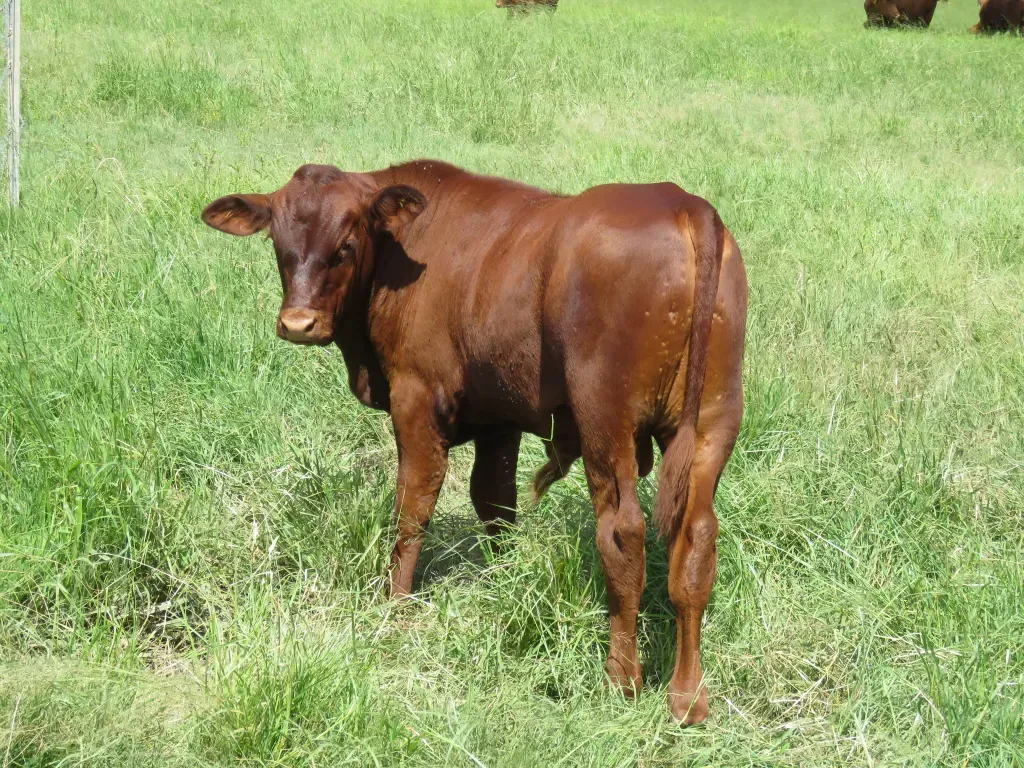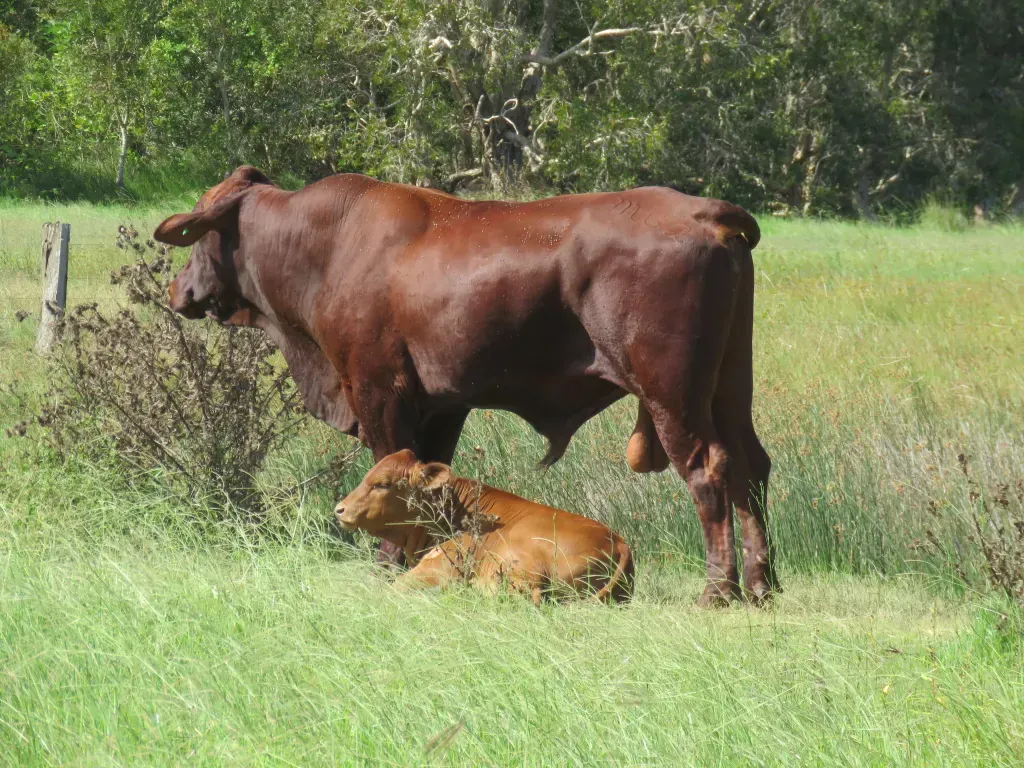Summary of Estimated Breeding Values
An estimated breeding value (EBV) is the scientific method of using the measured values of traits to estimate the genetic worth of an animal. It is the only guaranteed method of predicting the potential of an animal’s genetic merit.
The EBV of a Belmont Red is calculated related to ALL other animals recorded within the Belmont breed. From the time measurement of traits were first recorded for the breed, all data is kept. All subsequent data inputed into the system from all animals uses this information. The information of the original or base animals is the reference point for the breed . For example, if a bull has an EBV of + 40kg for 600 day weight, it indicates that the progeny of that bull will be 40 kg heavier at 600 day than those of the original bulls , if they are reared and managed identically.
The best average EBV’s of this present crop of all Belmont Reds is therefore also a measure of the genetic gain the breed has achieved. Thus, if the herd average EBV for example 600 day weight is +30 kg, then this is a genetic again of the breed since the start of recording measurement . Therefore , a bull with an EBV of + 40 kg will produce progeny the are 10 kg heavier than the breed average.
EBVs are therefore extremely important when selecting and buying breeding stock, especially bulls . In her lifetime a cow may leave 10 offspring, but a bull may leave 200 or more. So therefore bulls are most important in improving the genetic merit of your herd. Using EBVs to make your choices for herd improvement is choosing the animal according to exact specifications.
Why Measure?
Genetic gain is directional and permanent . You can make the progeny of your cattle better or worse and those genetic changes are permanent .
You cannot improve or change something you can’t measure. To evaluate anything objectively, it needs to be measured.
We all look at a bull or cow or dog or cat and see what we think is a “good “animal. This is our subjective opinion. However, on looks alone, we cannot tell whether this animal is fertile for example, or has good growth, or what their temperament is like. These attributes may be what we are looking for in our herd. In order to take away subjectivity, it is important to utilise objective measurements to get a more accurate idea of what an animal’s characteristics are really like.
Measuring removes our personal bias or our inability to estimate when we are measuring something. It removes our subjective interpretation and makes analysis objective. It is only possible to truly gauge improvement or change in a trait if it is measured.
Because genetic gain is directional and permanent, you can make the progeny of your cattle better or worse and those genetic gains are permanent. It is therefore important to measure traits you find desirable to remain in your herd.
The fundamental principle of the Belmont is that objective measurements are used to select animals to advance or improve the herd. When selecting cattle we measure a selection of traits which we find desirable for our herd. These are submitted to ABRI and analysed.
Breeding Quality Belmont Reds
For more information about our cattle, sires and sales, contact us



